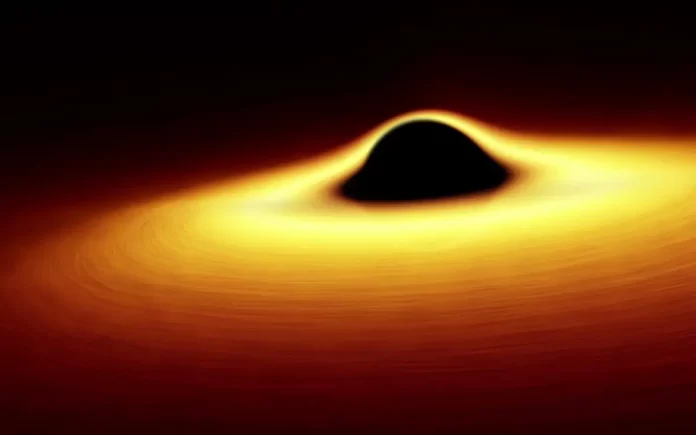New York: A groundbreaking study has unveiled a mesmerizing phenomenon at the core of our Milky Way galaxy: the supermassive black hole, Sagittarius A* (Sgr A*), is spinning at such an extraordinary velocity that it warps the very fabric of spacetime.
Published in the esteemed Monthly Notices of the Royal Astronomical Society, the latest findings reveal that this staggering spin imparts an oblong shape to the surrounding space, akin to a football.
Conducted by Ruth Daly and her team at Penn State University, the research harnessed the capabilities of the powerful Chandra X-ray Observatory and the Karl G. Jansky Very Large Array (VLA) to meticulously measure Sgr A*’s spin. Their analysis of material flow towards and away from the black hole unveiled a rotation speed approximately 60% of its theoretical maximum, resulting in an angular momentum reaching nearly 90% of the possible value for a black hole of its mass.
Black holes, characterized by mass and spin, exhibit intriguing interactions with their environment, with spin playing a pivotal role. While previous attempts to gauge Sgr A*’s spin yielded diverse outcomes, ranging from no spin to near-maximum rotation, this new study furnishes compelling evidence of its rapid rotation, shaping the surrounding spacetime into a flattened form.
The visual representation accompanying the study vividly portrays Sgr A* surrounded by a swirling disk of gas, depicted in vibrant yellow-orange hues. This gas is inexorably drawn towards the event horizon—the point of no return—before plunging into the distorted spacetime region. Notably, blue blobs illustrate the jets emanating from the black hole’s poles, a hallmark of spinning supermassive black holes.
Despite its significant spin, Sgr A* has remained relatively quiescent in recent millennia, emitting feeble jets due to a dearth of nearby matter. However, researchers speculate that an influx of surrounding material could incite more dynamic activity.
To determine Sgr A*’s spin, the team employed the innovative “outflow method”, correlating the black hole’s rotation with its mass, nearby matter characteristics, and outflow properties. This technique combines radio wave data, indicative of collimated outflows, with X-ray emissions from the gas disk, offering a comprehensive insight into the black hole’s behavior.



